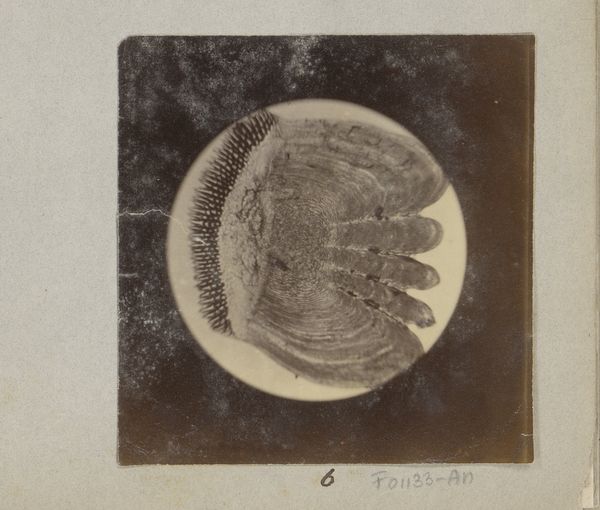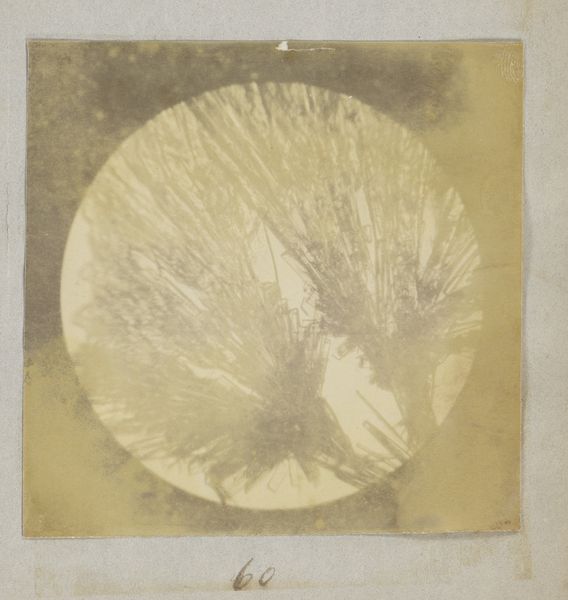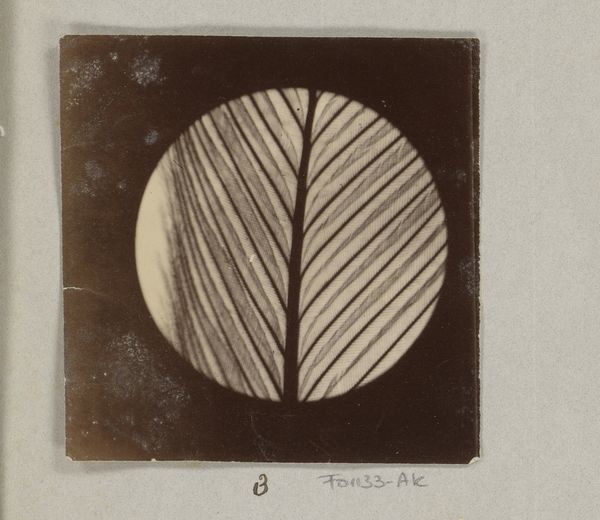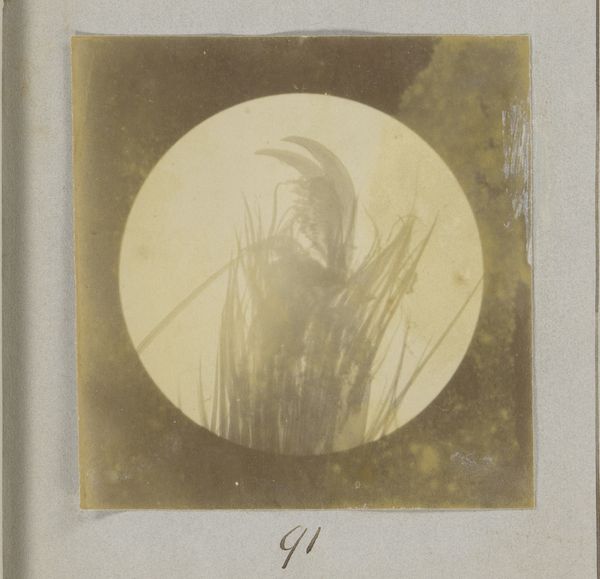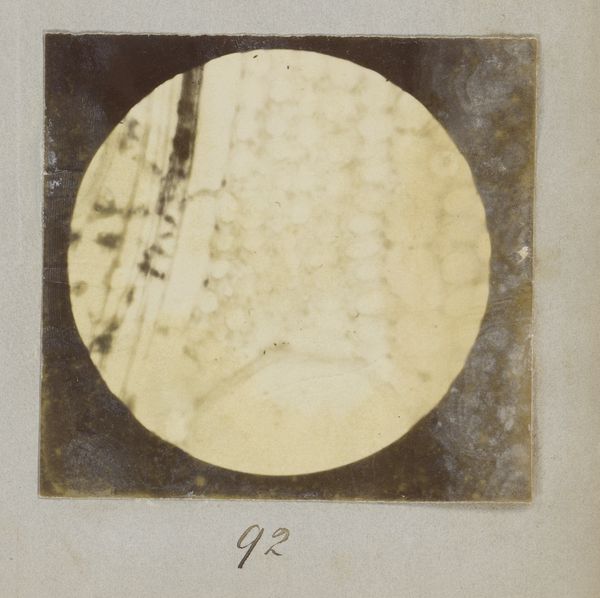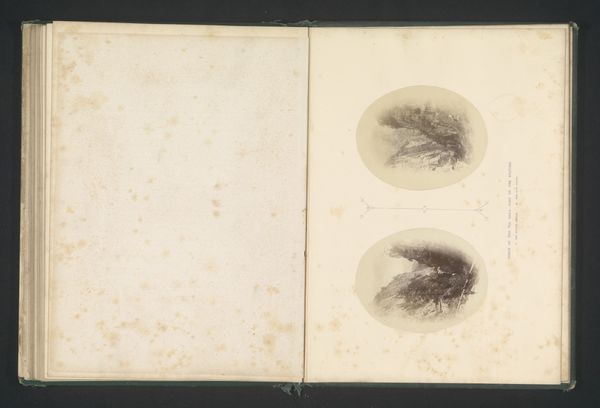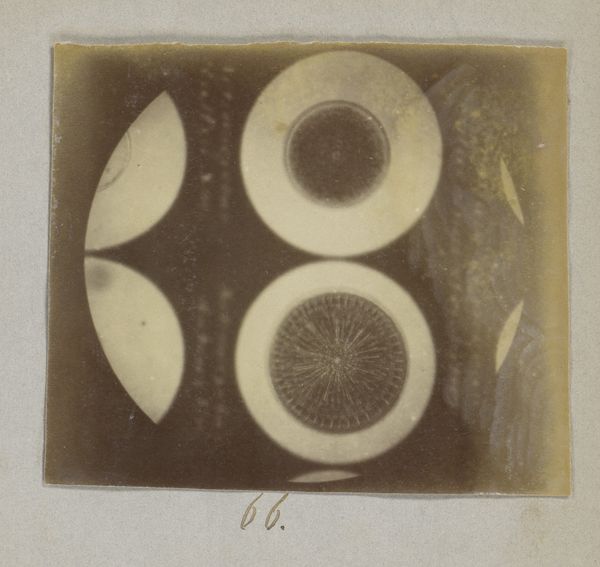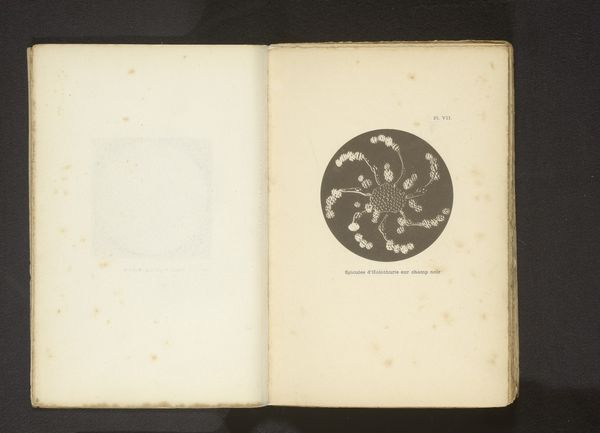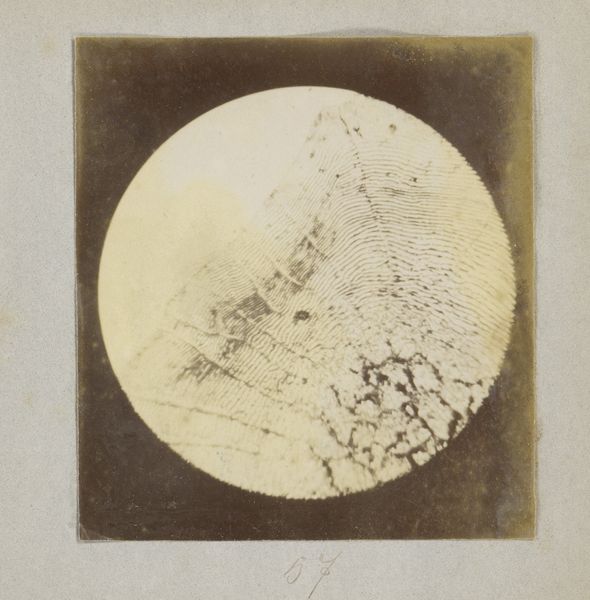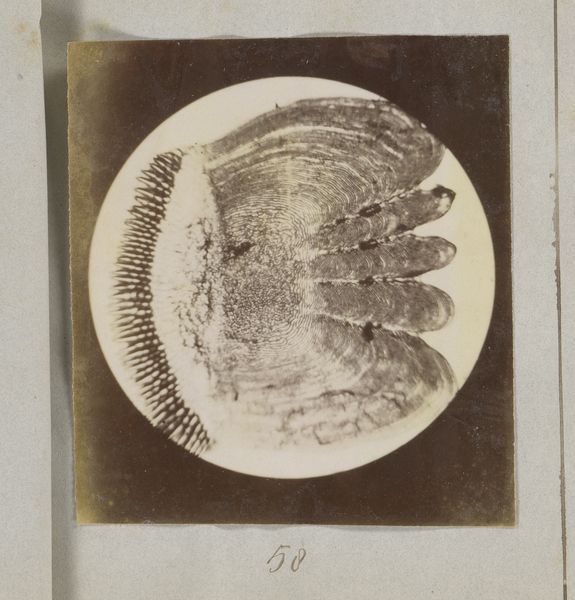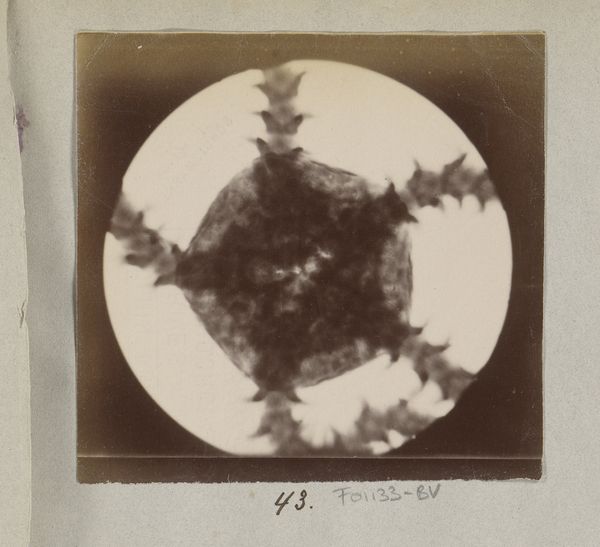
Microscopische opname van zwavelzuurmangaan, zestig keer vergroot 1887 - 1888
0:00
0:00
contact-print, photography
#
still-life-photography
#
contact-print
#
photography
#
coloured pencil
#
realism
Dimensions: height 99 mm, width 98 mm
Copyright: Rijks Museum: Open Domain
Curator: This stunning photograph, “Microscopische opname van zwavelzuurmangaan, zestig keer vergroot,” a microscopic image of sulfuric acid manganese magnified sixty times, was created by Marinus Pieter Filbri between 1887 and 1888, using the contact-print technique. It presents such an interesting set of visual problems; what’s your immediate response? Editor: My initial reaction is one of unexpected force; even through the scientific lens, the angular shards evoke landscapes devastated by conflict, or perhaps a harsh, frozen tundra rendered monochrome by extreme conditions. Curator: The monochrome palette certainly emphasizes those stark formal relationships. The strong diagonal lines radiating from a central point create a dynamic composition that belies the subject matter’s supposed objectivity. We have the circular frame contrasting against the sharp linear projections, adding tension. Do you read this photograph as purely representational? Editor: Hardly! The piece complicates the supposed scientific objectivity of photography at that time. Here we see a collision of art and science, a moment when documenting the “real” edges toward abstraction. We need to ask what scientific purposes shaped how these photographs were commissioned and received at the time. Who controlled that narrative? Curator: I am interested in this blend of disciplines, too. Filbri’s artistic choices—the framing, the tonal gradations—suggest a deliberate attempt to imbue this scientific image with a sense of aesthetic appeal. Look how he balances light and shadow! There's a real tension between documenting and composing. Editor: Exactly. It pushes me to consider the colonial context and mining histories of that time, specifically where and how sulfuric acid and manganese impacted the landscape, the laborers, the communities connected to their extraction. A "scientific" photograph such as this can't be divorced from the real-world effects. Curator: This micro-photograph offers a rigorous exercise in observing composition, tonal relationships and how form dictates content; in doing so, we see that so-called objective images carry visual and aesthetic assumptions, which can influence their presumed neutral message. Editor: I agree. Ultimately, this prompts essential questions about art and science that remain today.
Comments
No comments
Be the first to comment and join the conversation on the ultimate creative platform.
